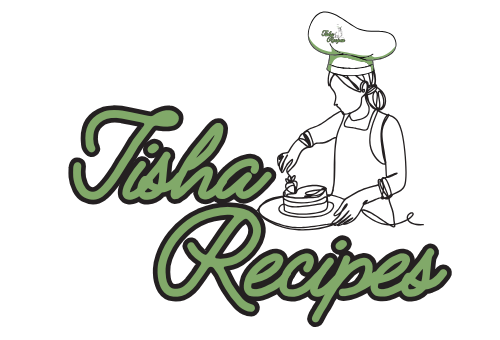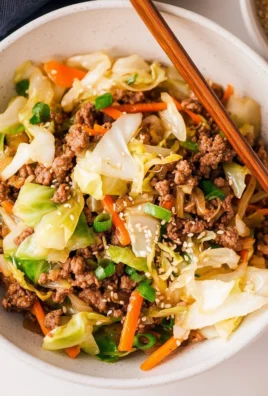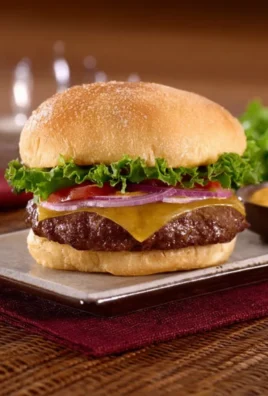
Spaghetti Carbonara is a culinary marvel that embodies the heart and soul of Italian cooking. With its silky, golden sauce clinging to perfectly al dente spaghetti, accented by crispy guanciale and sharp Pecorino Romano, this dish is a testament to the power of simplicity. Despite requiring just a handful of ingredients, Carbonara delivers a depth of flavor that has made it a favorite across the globe.
Originating from the Lazio region, specifically Rome, Carbonara is a dish steeped in history and cultural significance. Its roots lie in the resourcefulness of home cooks, who transformed humble pantry staples into an enduring classic. Today, Spaghetti Carbonara is celebrated not only for its rich flavors but also for its ability to connect tradition with modernity.
The History and Origins of Spaghetti Carbonara
A Dish of Humble Beginnings
The exact origins of Spaghetti Carbonara are the subject of much debate among culinary historians. Some trace its lineage to the “carbonari,” Italian charcoal workers who purportedly cooked pasta with eggs, cheese, and cured pork over open fires. This theory is supported by the dish’s name, which is derived from “carbone,” the Italian word for charcoal.
Another prevailing theory suggests that Carbonara was born out of necessity during World War II. American soldiers stationed in Italy are said to have combined their rations of powdered eggs and bacon with local pasta, inadvertently creating a precursor to the modern dish. Italian cooks adapted the recipe, refining it with traditional ingredients like guanciale and Pecorino Romano.
Evolution Over Time
The recipe for Spaghetti Carbonara has evolved over the decades, with variations emerging in different regions and cultures. While the traditional version is characterized by its simplicity, modern adaptations often incorporate additional ingredients such as cream, garlic, or parsley. These variations, though controversial among purists, demonstrate the dish’s versatility and global appeal.
The Debate Around Cream
One of the most hotly contested topics in Carbonara’s history is the use of cream. Traditionalists argue that the creaminess of the dish should come solely from the emulsion of eggs, cheese, and pasta water. However, some modern recipes, particularly outside Italy, include cream for added richness and stability. This divergence highlights the tension between preserving culinary heritage and adapting to contemporary tastes.
Cultural Significance
Spaghetti Carbonara is more than just a dish—it’s a symbol of Italian culinary ingenuity and tradition. Its enduring popularity speaks to its universal appeal and its ability to bridge cultural divides.
A Staple in Roman Cuisine
In Rome, Spaghetti Carbonara is a cornerstone of local cuisine, often featured alongside other pasta classics like Cacio e Pepe and Amatriciana. Roman chefs take pride in their mastery of Carbonara, viewing it as a benchmark of skill and a tribute to the city’s culinary heritage.
Global Influence
The popularity of Spaghetti Carbonara extends far beyond Italy. In countries around the world, the dish has been embraced and adapted, becoming a beloved comfort food. Its simplicity and versatility make it accessible to home cooks of all skill levels, while its rich flavors ensure its place on restaurant menus.
A Representation of Italian Values
Carbonara embodies key principles of Italian cooking:
- Simplicity: The dish relies on a few high-quality ingredients to create a harmonious flavor profile.
- Respect for Tradition: The classic recipe is a celebration of Roman culinary heritage.
- Resourcefulness: Carbonara demonstrates how humble ingredients can be transformed into something extraordinary.
The Anatomy of Spaghetti Carbonara
The Pasta
Spaghetti is the traditional choice for Carbonara, offering the perfect balance of texture and surface area to absorb the creamy sauce. Other pasta shapes like fettuccine, bucatini, or rigatoni can also be used, but they alter the dish’s texture and presentation.
The Sauce
At the heart of Carbonara is its velvety sauce, made from a mixture of eggs, cheese, and pasta water. Achieving the right consistency requires precision and technique: the sauce should be creamy and luxurious, without being overly thick or clumpy.
The Pork
Guanciale, or cured pork jowl, is the traditional choice for Carbonara. Its rich, fatty flavor and tender texture set it apart from alternatives like pancetta or bacon. Guanciale is rendered slowly in a skillet until crispy, releasing flavorful fat that serves as the base for the sauce.
The Cheese
Pecorino Romano is the cheese of choice for Carbonara, lending a sharp, tangy flavor that complements the richness of the pork and eggs. In some variations, Parmesan or a blend of Pecorino and Parmesan is used, though purists insist on sticking to Pecorino for authenticity.
The Seasoning
Freshly ground black pepper is the sole seasoning in traditional Carbonara. Its aromatic heat adds depth and balance to the dish, enhancing the other flavors without overpowering them.
Why Spaghetti Carbonara Endures
Spaghetti Carbonara’s enduring appeal lies in its ability to deliver maximum flavor with minimal ingredients. It’s a dish that showcases the beauty of Italian cooking, where simplicity and quality reign supreme.
Versatility
Carbonara is adaptable to a wide range of tastes and dietary preferences. While the traditional recipe remains iconic, variations like vegetarian Carbonara or seafood Carbonara allow for endless experimentation.
Ease of Preparation
Despite its luxurious appearance, Carbonara is surprisingly simple to make. The dish can be prepared in under 30 minutes, making it an ideal choice for weeknight dinners or impromptu gatherings.
Universality
The flavors of Carbonara are universally appealing, with its combination of creamy, salty, and savory elements resonating with diners of all backgrounds. Its global popularity is a testament to its timelessness and versatility.
Essential Ingredients and Techniques
The secret to mastering Spaghetti Carbonara lies in its simplicity. By using a handful of high-quality ingredients and applying meticulous techniques, you can create a dish that is both indulgent and true to its Roman roots. In this section, we’ll explore each component of Carbonara in detail, along with step-by-step instructions to achieve perfection.
Essential Ingredients and Their Roles
1.1. The Pasta
- Spaghetti: The traditional pasta for Carbonara, spaghetti provides an ideal balance between texture and sauce coverage. The long, slender strands allow the creamy sauce to coat each bite evenly.
- Alternative Shapes: While spaghetti is the classic choice, other pasta shapes like bucatini (a hollow, tubular pasta), fettuccine, or rigatoni can be used. These shapes offer a different mouthfeel and can be paired with the same sauce, though they slightly deviate from tradition.
- Choosing Quality: Opt for high-quality dried pasta made from 100% durum wheat semolina. The rough surface of artisanal pasta helps the sauce adhere better.
1.2. The Pork
- Guanciale: Made from cured pork jowl, guanciale is prized for its rich flavor and high fat content. It renders beautifully when cooked, providing both crispy bites and a base of flavorful fat for the sauce.
- Alternatives: If guanciale is unavailable, pancetta is the closest substitute. Bacon can also be used, though its smoky flavor may slightly alter the traditional profile.
- Preparation Tips: Slice guanciale into small cubes or thin strips. Cook it slowly over medium heat to render the fat without burning, creating golden, crispy pieces.
1.3. The Eggs
- Eggs and Yolks: A combination of whole eggs and extra yolks is key to creating a creamy, velvety sauce. The yolks contribute richness, while the whites help bind the sauce.
- Proportion: For 400 grams (14 oz) of pasta, a typical ratio is 2 whole eggs and 2 additional yolks. Adjust this depending on your preference for richness.
1.4. The Cheese
- Pecorino Romano: This aged sheep’s milk cheese provides a sharp, tangy flavor that balances the richness of the sauce. It’s saltier and more robust than Parmesan, making it the traditional choice.
- Alternatives: Parmesan or a mix of Pecorino Romano and Parmesan can be used for a milder flavor.
- Grating Method: Use a microplane or fine grater to ensure the cheese integrates smoothly into the sauce.
1.5. Black Pepper
- Freshly Ground: Coarsely ground black pepper adds a subtle heat and aromatic depth. It should be added generously to complement the other flavors.
- Toasting: Lightly toasting the pepper in a dry pan before adding it to the dish enhances its aroma and flavor.
1.6. Pasta Water
- Why It’s Important: Starchy pasta water is a critical ingredient that helps emulsify the sauce, giving it a silky, creamy consistency. Always reserve at least a cup of pasta water before draining.
Step-by-Step Preparation Techniques
2.1. Cooking the Pasta
- Boil Water: Bring a large pot of water to a rolling boil. Add a generous amount of salt (about 2 tablespoons per 4 quarts of water) to season the pasta.
- Cook Until Al Dente: Add the spaghetti and cook until al dente, as the pasta will continue to cook slightly when combined with the sauce. Reserve 1 cup of pasta water before draining.
2.2. Preparing the Guanciale
- Render the Fat: Heat a skillet over medium heat. Add the sliced guanciale and cook slowly, allowing the fat to render. Stir occasionally to ensure even cooking.
- Crisp the Meat: Once the guanciale is golden and crispy, remove it from the skillet using a slotted spoon, leaving the rendered fat behind.
2.3. Creating the Egg Mixture
- Whisk the Eggs: In a mixing bowl, combine the whole eggs, additional yolks, and finely grated Pecorino Romano.
- Season: Add a generous amount of freshly ground black pepper. Whisk until the mixture is smooth and homogenous.
2.4. Combining the Pasta and Sauce
- Return Pasta to the Pan: Transfer the drained pasta to the skillet with the rendered guanciale fat. Toss over low heat to coat the pasta in the fat.
- Incorporate the Egg Mixture: Remove the skillet from the heat to prevent scrambling the eggs. Pour the egg mixture over the pasta, tossing vigorously to coat the strands evenly.
- Adjust the Consistency: Add reserved pasta water, one tablespoon at a time, until the sauce achieves a silky, creamy texture.
2.5. Adding the Finishing Touches
- Fold in Guanciale: Stir the crispy guanciale back into the pasta. Toss to distribute evenly.
- Plate and Garnish: Serve the Carbonara immediately, topped with additional Pecorino Romano and a final crack of black pepper.
Common Mistakes and How to Avoid Them
Mistake 1: Scrambled Eggs
- Solution: Always remove the skillet from direct heat before adding the egg mixture. Toss the pasta continuously to ensure even distribution and prevent the eggs from cooking too quickly.
Mistake 2: Oversalting the Dish
- Solution: Be mindful of the saltiness of the guanciale and Pecorino Romano. Use lightly salted pasta water and taste the dish before adding additional salt.
Mistake 3: Dry Sauce
- Solution: Reserve plenty of pasta water and add it gradually to achieve the desired consistency. The starch in the water helps bind the sauce, making it creamy and cohesive.
Mistake 4: Overcooked Pasta
- Solution: Cook the pasta until just al dente, as it will continue to cook slightly when combined with the sauce.
Tips for Perfect Spaghetti Carbonara
- Work Quickly: The key to a creamy sauce is speed. Toss the pasta and egg mixture immediately after draining the pasta, using the residual heat to cook the eggs gently.
- Use High-Quality Ingredients: With so few components, the quality of each ingredient is paramount. Opt for authentic Pecorino Romano and guanciale whenever possible.
- Embrace Simplicity: Resist the urge to add cream, garlic, or additional ingredients. The beauty of Carbonara lies in its simplicity and balance of flavors.




Leave a Comment